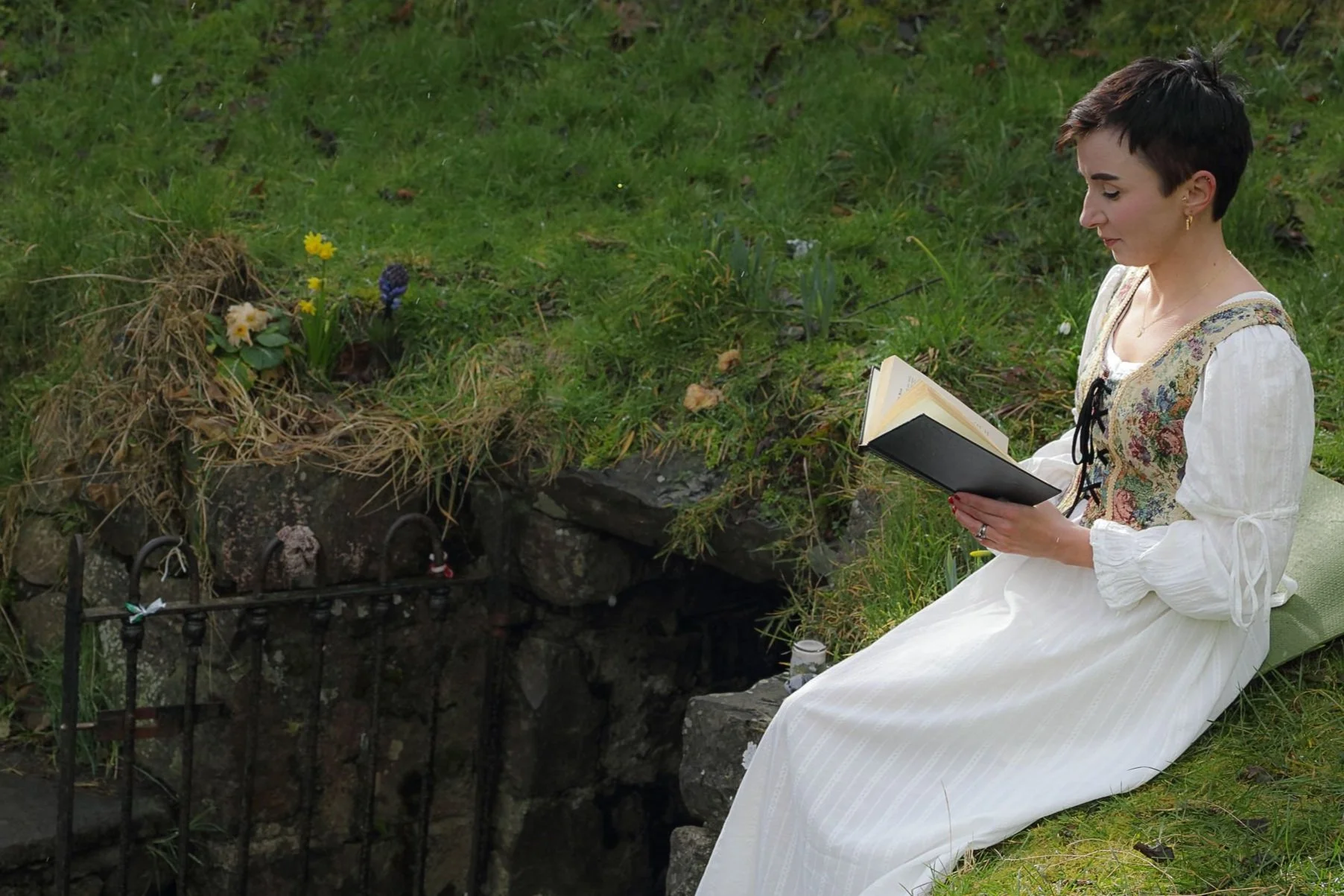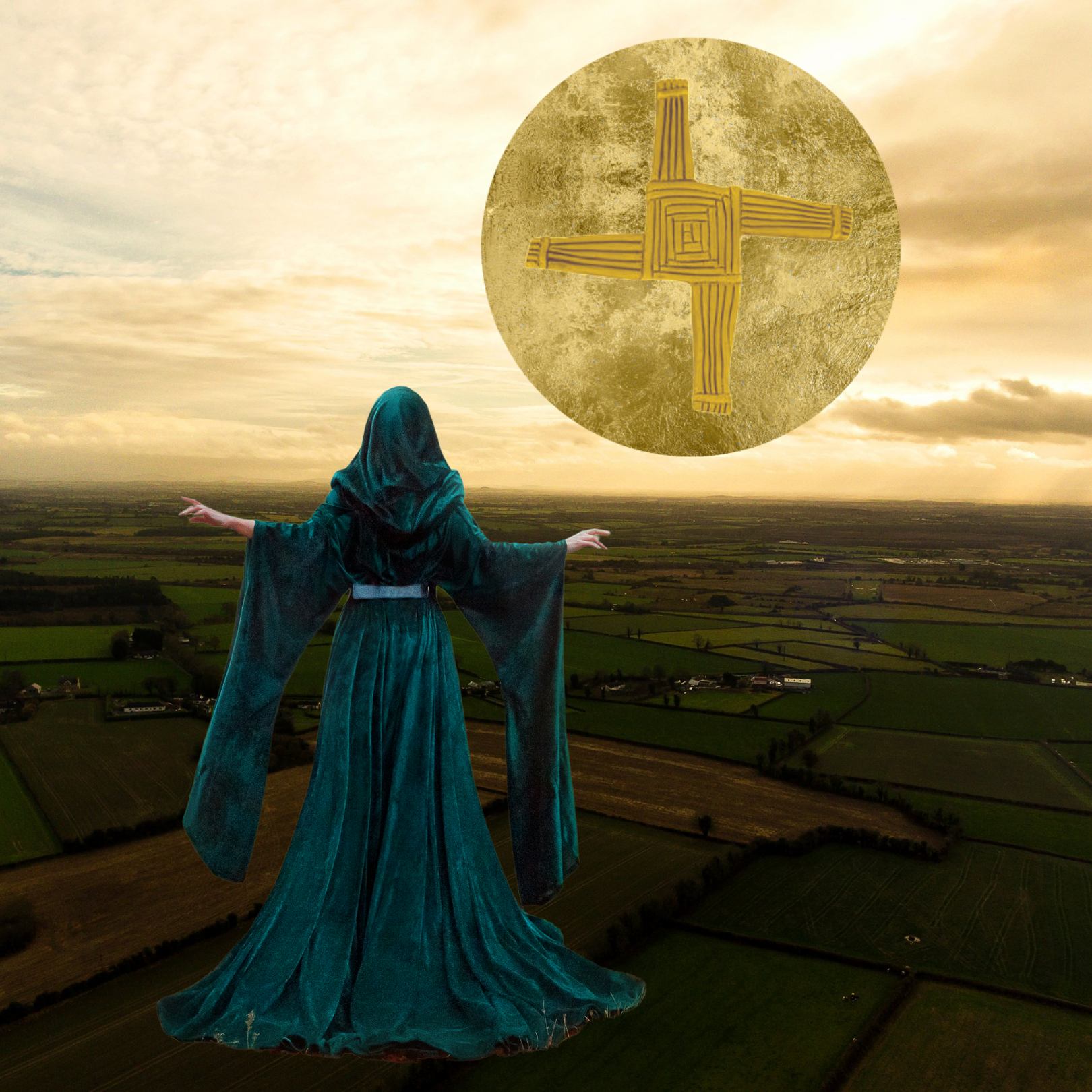
MUSINGS FROM THE OTHERWORLD
My current writings and musings on Celtic feminine mysticism and soulful living now find their home on Substack. I invite you to join me there but I’ve also preserved an archive of my previous writings (2021-2023) below.
Making Crosses on Brigid’s Eve
In Ancient Ireland, Imbolc came to honour the Celtic Goddess, Brigid. Brigid is originally referenced in our mythology as a Goddess of the Tuatha Dé Danann, Bríg (“BREEJ”); then as a triple Goddess - Brigit of the Filí (‘Poets’), Brigit of Leechcraft (the art of healing), and Brigit of Smithcraft. And later, an equally magical Saint Brigid.
Tomorrow, 1st February, is known in Ireland as the beginning of Imbolc and St Brigid’s Day. This seasonal festival marks the first day of spring in the Celtic Calendar; when the days grow longer and the weather becomes milder. The word Imbolc or Imbolg in Old Irish is generally accepted to mean “in the belly”, most likely in reference to the pregnant ewes that give birth in the spring. Bolg is the Gaeilge word for ‘belly’.
In Ancient Ireland, Imbolc came to honour the Celtic Goddess, Brigid. Brigid is originally referenced in our mythology as a Goddess of the Tuatha Dé Danann, Bríg (“BREEJ”); then as a triple Goddess - Brigit of the Filí (‘Poets’), Brigit of Leechcraft (the art of healing), and Brigit of Smithcraft. And later, an equally magical Saint Brigid.
Birthing Bridget by Dee Mulrooney
FEAST OF BRIGID
When Ireland was Christianised, Brigid was canonised and the festival became St Brigid’s Day. For hundreds of years, we have celebrated her feast day by making crosses from rushes and hanging them in our homes. Known as St Brigid’s crosses, these talismans are traditionally made on Oíche Fhéile Bhríde, ‘Night of the Feast of Brigid’ or St Brigid’s Eve - today, 31st January. They protect the household, the farm, and the land, and highlight the old tension - and reciprocity - between Ireland’s Christian and pagan pasts.
The primary school I went to as a child was called St Brigid’s National School, and so each year we made our Brigid’s Cross on the 31st January and the school closed on 1st in her honour. So I developed a special love for this Goddess giving me a day off school each year! After much campaigning in Ireland, in 2023, the 1st of February will become a public holiday in honour of our Brigid. This is felt as immense progress for the feminine on this land.
Brigid by Courtney Davis projected on to the General Post Office, GPO, in Dublin city centre as part of the phenomenal Herstory campaign
CROIS BHRÍDE
A Brigid’s Cross or Crois Bhríde is made from wetland rushes like green field rushes. I tend to gather dune grasses from my local beach because that's what's available to me. The rushes are collected, sorted, and then washed. On St Brigid’s Eve, the previous year’s cross is usually burned before the new one is woven. This cleansing ritual symbolises the death of the past year and the beginning of the next. Weaving a Brigid’s cross is a healing and nourishing experience.
The most popular and recognisable design is the four-legged cross, which is fashioned by pinching and folding the rushes around one another as they are slowly rotated. The legs are then tied with string to keep the rushes together. This video gives a lovely tutorial on how to make the crosses. Of course, different versions exist across Ireland. In Sligo and Leitrim, crosses are made by interlacing rushes in a crisscrossing pattern. Another design is the three-legged cross, which some scholars believe has pagan origins.
St Brigid's Crosses from around Ireland. Photo from Scoil Bhríde, Portlaoise
ANCIENT FERTILITY SYMBOLS
Not a ‘true’ cross, the three-legged St Brigid’s cross may come from the lozenge. This shape—a form of rhombus—has been used by many cultures, including the Celts, Berbers, and Paleolithic Eastern Europeans, as a symbol of female fertility. All across Ireland, lozenges can be found on Neolithic stone monuments, where they were carved by prehistoric peoples. We cannot say for sure if the three-legged cross is directly connected to the lozenge, and we know the modern conception of a St Brigid’s cross is Christian—the crosses are traditionally blessed with holy water. However, the association of both the lozenge and Brigid with fertility is certainly compelling.
The Mound of Hostages (Duma na nGiall) at the Hill of Tara is a 5,000 year old passage tomb and ritual complex aligned to the rising sun at Imbolc
WELCOMING IN THE SPRING
Once you have finished making your Brigid’s Cross, you can hang it above your door, in your car, or anywhere else in your home. Wherever it hangs, the cross will watch over and protect your loved ones as the days grow longer and then shorter again. You will burn it next year, as you dispel the darkness of winter and embrace the promise of spring.






